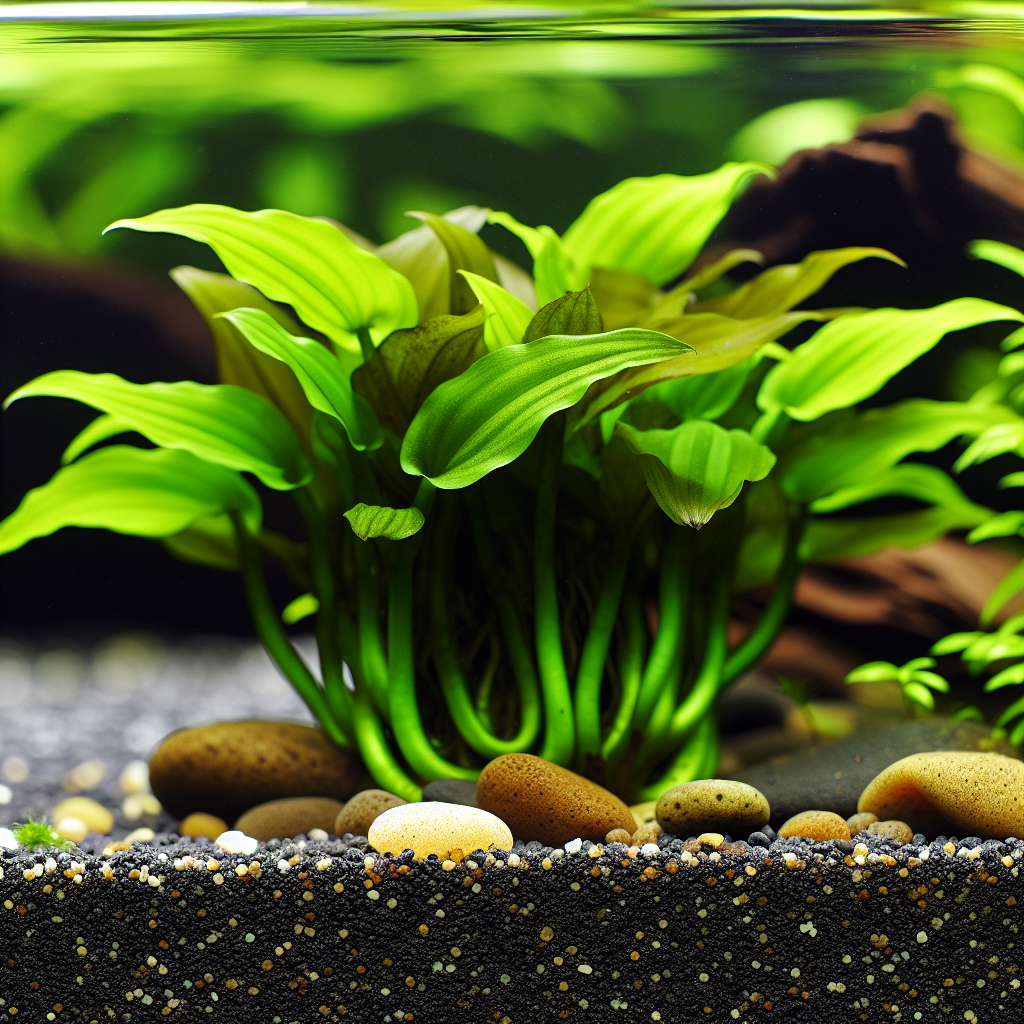
Dive into the essentials of creating the perfect substrate environment for the Amazon Sword Echinodorus 'Reni' to thrive in your aquarium.
The Importance of Substrate for Amazon Sword Echinodorus Reni
The Amazon Sword Echinodorus 'Reni' is a popular choice among aquarium enthusiasts due to its lush, vibrant leaves and relatively easy care requirements. However, one of the most critical factors in ensuring the healthy growth of this plant is selecting and maintaining the right substrate. The substrate serves as the foundation for the plant's root system, providing necessary support and nutrients.
A well-chosen substrate not only anchors the plant but also aids in nutrient absorption. Without an appropriate substrate, the Amazon Sword may struggle to establish a robust root network, leading to poor growth and potential health issues. Therefore, understanding the importance of the substrate is the first step in successfully cultivating this beautiful aquatic plant.
Choosing the Right Substrate Material
When it comes to selecting the right substrate material for the Amazon Sword Echinodorus 'Reni,' there are several options to consider. While gravel and sand are common choices, they may not provide the necessary nutrients required for optimal growth. Instead, a nutrient-rich substrate such as aquasoil or specialized plant substrates designed for aquatic plants is recommended.
These substrates typically contain essential nutrients like iron, potassium, and other trace elements that promote healthy root development and overall plant vitality. It is also beneficial to choose a substrate with a fine-grain texture, which allows the roots to penetrate and anchor more effectively.
Nutrient Requirements and Supplements
The Amazon Sword Echinodorus 'Reni' has specific nutrient requirements that must be met to ensure its healthy growth. While a nutrient-rich substrate provides a good foundation, additional supplementation may be necessary to maintain nutrient levels over time. Fertilizer tablets or root tabs can be inserted into the substrate to release essential nutrients directly to the plant's root zone.
In addition to substrate supplements, liquid fertilizers can also be used to provide a balanced supply of nutrients. Regular dosing with a comprehensive liquid fertilizer ensures that macro and micronutrients are available in the water column, supporting both root and leaf development.
Setting Up Your Aquarium for Optimal Growth
Creating an ideal environment for the Amazon Sword Echinodorus 'Reni' involves more than just choosing the right substrate. Start by layering the substrate to a depth of at least 2-3 inches to allow ample space for root expansion. Ensuring proper lighting is also crucial, as this plant requires moderate to high light levels to thrive. Full-spectrum LED lights are an excellent choice to provide the necessary illumination.
Additionally, maintaining stable water parameters, including pH and temperature, will support the plant's growth. The ideal pH range for Amazon Swords is between 6.5 and 7.5, with a temperature range of 72-82°F (22-28°C). Regular water changes and proper filtration will help keep the environment clean and free from excess nutrients that could lead to algae growth.
Maintenance Tips for a Healthy Substrate
Maintaining a healthy substrate is essential for the long-term growth of your Amazon Sword Echinodorus 'Reni.' Regular vacuuming of the substrate during water changes helps to remove debris and prevent the buildup of organic matter, which can lead to anaerobic conditions and root rot.
It's also important to monitor and replenish nutrient levels in the substrate. Over time, the nutrients in the substrate can become depleted, so periodic insertion of fertilizer tablets or root tabs will keep your substrate nutrient-rich. Keeping an eye on plant health and growth will help you identify any potential issues early, allowing you to make necessary adjustments to your substrate maintenance routine.
Additional Resources:



Leave a Comment